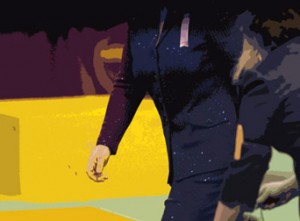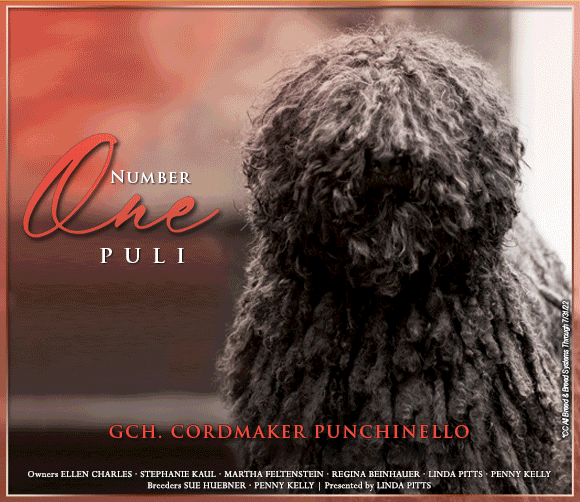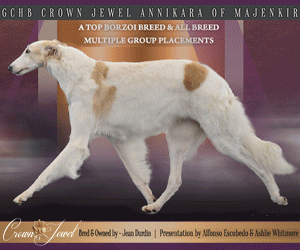From The CC Vault: Judging Junior Showmanship …What Are The Expectations?
By William J. Given
Originally published: February 2012
 There are four areas we evaluate when we judge Junior Showmanship. Those areas are proper breed presentation, skill in the individual dog’s presentation, knowledge of ring procedure, and appearance and conduct. The dog must be groomed and exhibited in the manner appropriate with its presentation in the Breed ring.
There are four areas we evaluate when we judge Junior Showmanship. Those areas are proper breed presentation, skill in the individual dog’s presentation, knowledge of ring procedure, and appearance and conduct. The dog must be groomed and exhibited in the manner appropriate with its presentation in the Breed ring.Probably the most significant area is skill in the individual dog’s presentation because so much is evaluated here. Please resist the urge to stack your dog as soon as you get into position. The AKC’s rules are very specific and you can expect us to notice if you begin stacking your dog before being told to do so.
When stacking your dog, we will be checking your dog’s feet to make sure they are straight or appropriately placed under your dog. We will be looking at the rear extension of the dog to ensure there is not too little nor too much. Depending on the size of your dog and your preference, you may stand or kneel.
We want you to make sure that you do not detract from your dog. Make sure your lead is appropriate for your breed and that it is held correctly. If you are showing a small breed or you have a longer lead, fold it up into the palm of your hand. Also, we are in no great rush. Please take the time to position your dog correctly; it is to your advantage.
When moving your dog, the thing we will watch for most is: are you moving your dog at the correct pace for the breed? Too often juniors have a tendency to move their dogs too fast. We want to see juniors stop their dogs as directed. We do not want the dogs too close nor too far away; about three feet is perfect. Also, please watch where you are going and do not rush up on or crowd the competitor or dog in front of you.
It is important that the handler and dog work as a team. We expect the junior to be in control of their dog at all times but not excessively so. The dog should be responsive to the handler and the handler to the dog. We expect the junior to stay calm even if the dog is not on his game and acts up. Please do not give up while you are in the ring. We will notice.
Knowledge of ring procedure is important. We want juniors to focus on their dogs more than we want them focusing on us. We will give directions but we also expect juniors to be alert to the progression of judging.
We expect juniors to use the ring space wisely. A good many juniors have a tendency to move down the center of the mat, leaving their dogs on the edge of the mat or even off the mat. That can be dangerous for big dogs and the faster moving dogs. We want juniors to keep their dogs moving on the center part of the mat as much as possible.
We will only use the gaiting patterns commonly used in the breed ring. It is important that all juniors know them and be able to execute them well with their dogs at their side. It is on the rarest of occasions that judges find the need to make changes in the judging routine or change the patterns being used. All juniors should be prepared for changes.
The final area that juniors are evaluated on is appearance and conduct. Now, we do not want you to think that a junior wearing designer clothes from a high end retailer has an advantage because that is not the case. Nor is a junior wearing clothes from a discount chain store at a disadvantage. The expectation is simply that juniors come to the ring dressed appropriately for the occasion and that the outfit not hinder movement or detract from the presentation of their dog.
Whatever a junior is wearing, we expect it to be clean and pressed. The color of the outfit should be appropriate for the breed. For example, if a junior is handling a black dog, a black skirt or suit is not the best selection. Pants and skirts should not be too tight. If a young lady is wearing a skirt, it should be long enough that she could bend over without being revealing. Also, her top should be long enough so as not to show her stomach nor low cut to display cleavage. We expect young men to have their shirt tails tucked into their trousers and it is also appropriate for boys to wear neck ties. It is important that a junior’s shoes be comfortable and allow them to move around the ring briskly and safely.
I would be remiss here if I did not mention that what might be appropriate for a 16 year-old or 18 year-old might not be appropriate for a 10 year-old or a 12 year-old. A simple rule to consider is: if you stop to wonder (even for a moment) if an outfit is appropriate, it probably isn’t.
We expect juniors to be courteous to the stewards and to their fellow exhibitors. We want juniors to come to the ring prepared to give their dog their very best effort and ready to win. Juniors must be ready to accept the congratulations of their peers and they must also be just as ready to congratulate the class winner and the other competitors placed ahead of them.
If a junior does not win or place in their class, it does not mean that they did something wrong or that they did a bad job in the ring. It simply means that, in the judge’s opinion on that day and at that show, another junior did better and was awarded for their effort. Any junior that can place in a class is capable of winning a class. Any junior that can win a class has what it takes to win Best Junior Handler.
Short URL: http://caninechronicle.com/?p=250913
Comments are closed












